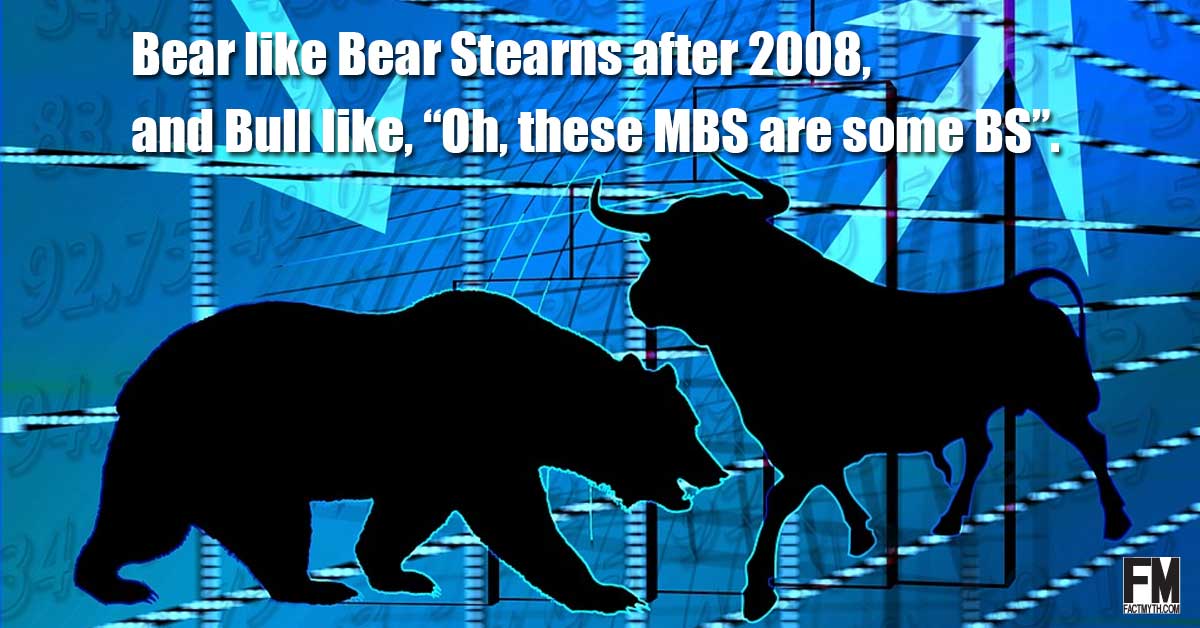The Difference Between a Bear Market and a Bull Market

Bull Vs. Bear Markets – What Do Bull and Bear Mean in Terms of the Stock Market?
A bear market is when prices on a market are moving down or expected to move down, a bull market is when they are going up or expected to go up. The terms generally apply to stocks and securities exchanged on the stock market or to the stock market as a whole, but they can apply to any market or generally anything that has a market price.[1][2]
An investor who thinks pessimistically markets (or stocks, or securities, or prices of a given thing in general) will move down is a bear, an investor who optimistically thinks markets will move up is a bull. Likewise, if an investor is betting big, thinking markets will go up, they are being bullish. If an investor is pulling their money out or shorting the market, they are being bearish.
Consider, for a market or stock to be bullish in their trading, investors must be bullish, and for a market to be bearish, investors must be bearish in their trading.
In other words, markets as a whole, prices of assets, the actions of investors, and the mentality of investors can all be described using these terms!
Bull markets are great to make money on investing in stocks (assuming a bullish investor), but present a risk of becoming bearish and correcting downward (creating “bulls caught in a bull trap”). A bear market can be great to dollar cost average into (with the hope that the price will rise in the future)… but that only works if the market becomes bullish in the future.
In short, the term bear is associated with the market as a whole or a stock going down (either in terms of predicting the market will go down or the market actually going down) and with the mentality that the market will go down, and likewise bull is associated with the market going up and the mentality that the market will go up.
The concept is a bull thrusts its horns up into the air, while a bear swipes its paws downward, when it attacks.[3]
Although, with that metaphor in mind, one can also think of it like this: a bears hibernates for long winters while a bull paces around and then charges at the red flag, horns out, and with a fury in short durations.
With the above said, in practice, bear markets tend to come on quick and then stay flat (like after the 2001 .com crash or 2007-2009 financial crisis) before returning to a bull market, and bull markets tend to be a long, slow, and steady incline. Timing a bear market is very difficult, and this is why some people hedge (betting on the market going up, but covering their position by betting that the market will go down at the same time).
TIP: A bull trap is when the market looks like it is going up (due to whatever signals), but is headed down. See a visual. A bear trap is when the market looks like it is going down, but is headed up. See a visual. Nothing worse than being a bull caught in a bear trap, but nothing is more frustrating than being bearish in a bull market (especially if you are shorting stocks).
TIP: A bull flag is when the market goes up (flag poll) and then steadies out (flag). See a visual. A bear flag is the the opposite of that. See a visual.
What are Stock Market Bulls vs Bears. The bulls and bears temper each other, helping to keep a market healthy and prices generally on par with values.